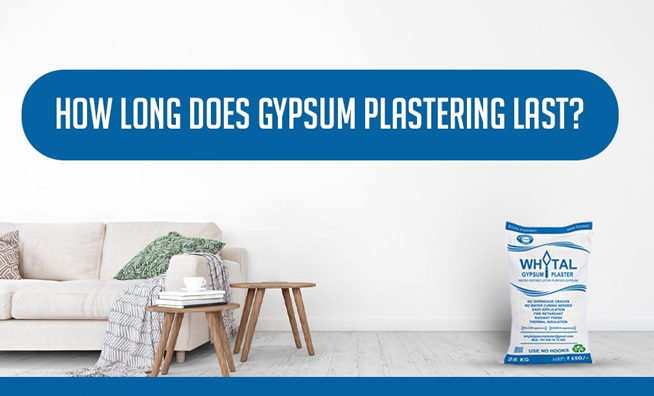Our Blogs

Whytal Tech Private Limited
Aug 17 | 2021
How long does Gypsum Plastering last?
Gypsum has become the most popular construction material as a substitute for other materials such as cement, sand and putty. It has unique qualities, and it is impossible to find another single substance that has all of the gypsum’s characteristics. Gypsum plastering has transformed the Indian building sector, setting new quality and cost-effective norms.
And one of the frequently asked questions is how long does Gypsum Plastering last?
Plastering the walls with gypsum is essential for a smooth finish. The traditional sand cement plaster is still the most common form of plastering throughout the country, but the advantages that gypsum offers over traditional sand cement plaster are causing gypsum plaster to gain popularity and usage.
Gypsum is a calcium sulphate crystal that forms naturally in the environment. Gypsum deposits can be as thin as a few millimeters thick or as thick as many tens of meters thick. This is then finely crushed and gently heated to around 150 degrees Celsius resulting in a product that contains fewer or no water molecules. For usage as gypsum plaster, this container is well-packaged and sealed.
Whytal Gypsum Plaster is a high-grade gypsum plastering material, which is imported. Dampness resistant properties are already incorporated while the Manufacturing process so there is no need to worry about dampness. And we have proved by completing more than 5000 projects all over Kerala. Also, it can help to cut the maintenance cost.
Gypsum plastering uses fewer resources than cement plastering, in addition to saving money. Plastering using gypsum, for example, conserves water. It doesn’t need to be cured in water. Gypsum plasters, which have a stronger compressive strength and lower density than cement plasters, are recommended for tall and high-rise structures by construction specialists. And its high bonding property and shortest setting time prevent cracks from walls.
Whytal gypsum plaster’s capacity to resist fire, corrosion, dampness, and heat contribute to the plaster’s and structures’ long-term durability. Gypsum has a low density and a better compressive strength than other building materials. Gypsum plasters minimise the dead weight of structures when utilised in high-rise structures. Also, it can increase the resistance to small quakes.
Several historic Egyptian structures have some of the best-preserved examples of gypsum plastering. This includes the Giza pyramids, frescoes and decorations. The fact that they are still standing today is a tribute to the unrivalled endurance of gypsum plastering, as well as the fact that gypsum has been used as a plastering material for numerous centuries and generations.

Whytal Tech Private Limited
Jul 05 | 2022
For a Perfect Plastering Material

Whytal Tech Private Limited
Nov 12 | 2022
Going Green with Eco-Friendly Whytal Gypsum Plaster

Whytal Tech Private Limited
Oct 18 | 2021
Whytal Gypsum Plaster For Beautiful Home Interior

Whytal Tech Private Limited
Sep 18 | 2021
Reduce Painting Cost with Gypsum plastering

Whytal Tech Private Limited
Jul 14 | 2021
Gypsum plaster offers better acoustics and how does it help hospitals and the Educational Institute?

Whytal Tech Private Limited
Aug 17 | 2021
How long does Gypsum Plastering last?
Terms of use | Privacy Policy | Contact us
© 2025 Whytaltech. All Rights Reserved